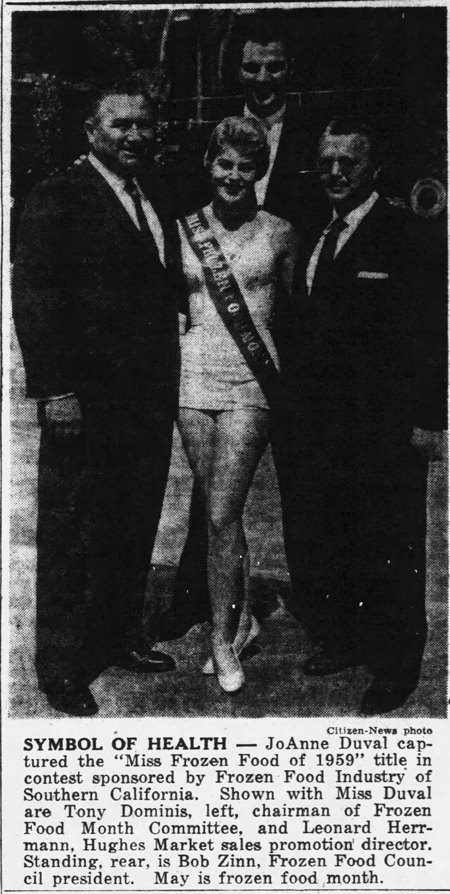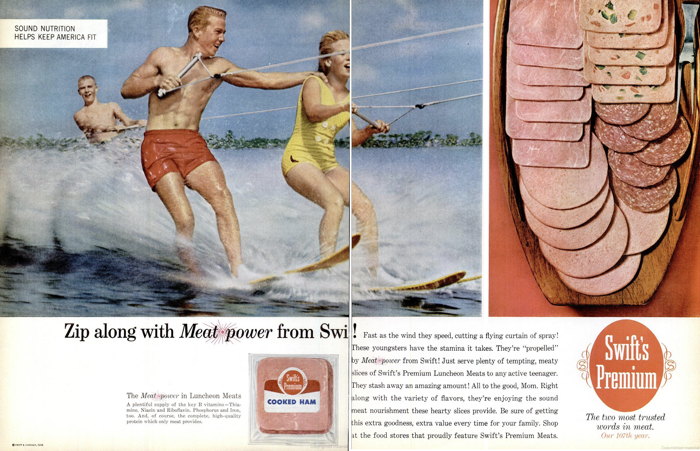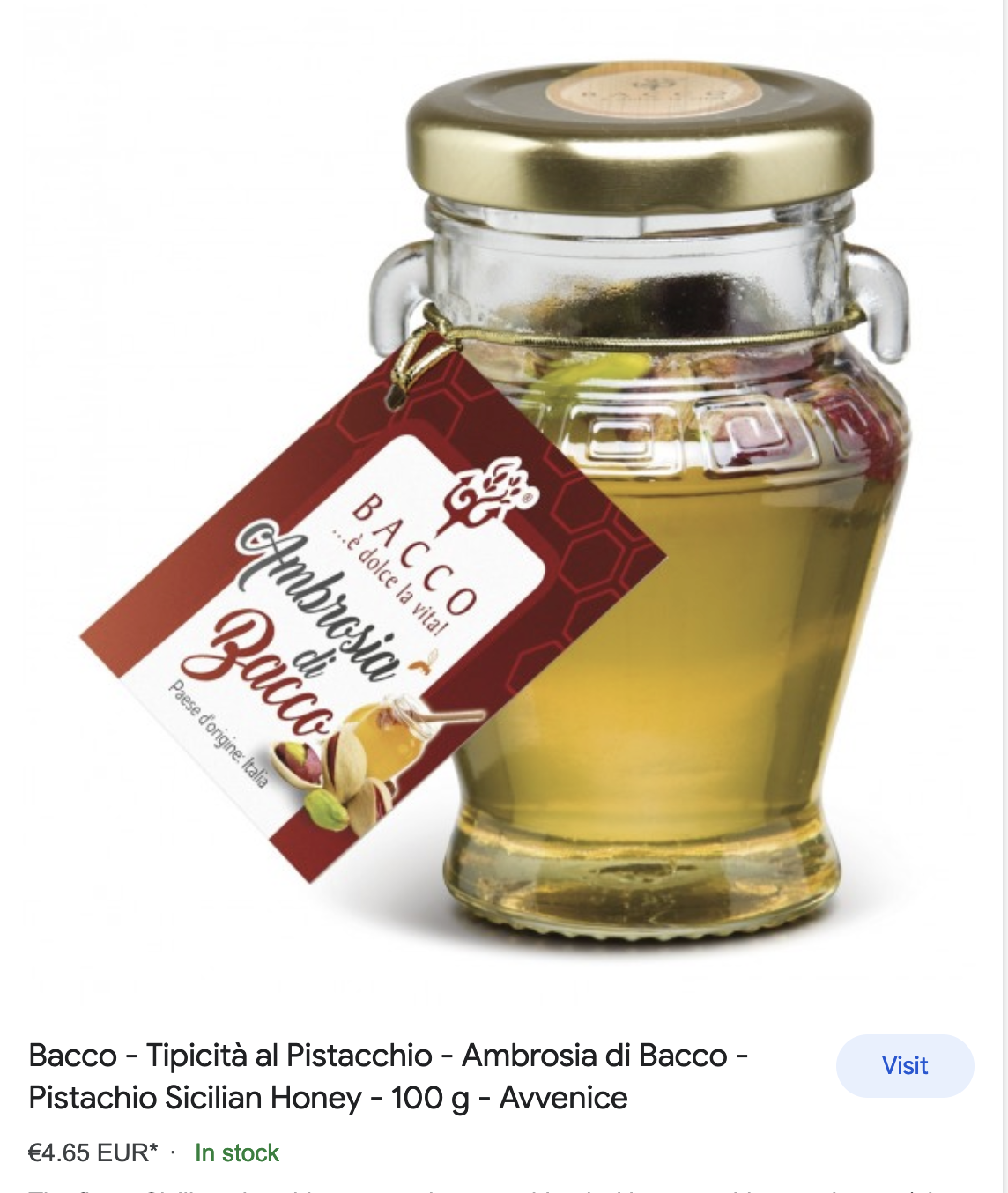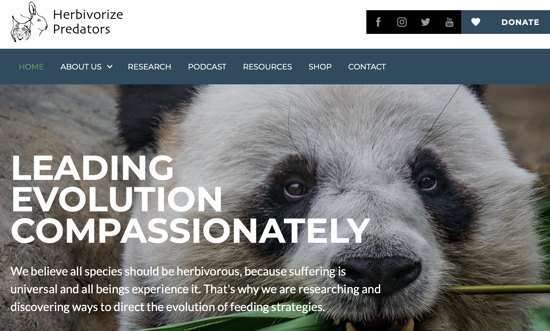Food
Child Shredded Meat
Chinese Innovation and Branding Leaps (2022):

Posted By: Alex - Mon Oct 23, 2023 -
Comments (8)
Category: Food, Odd Names, Products, Children
Meat-Nik
Sep 1958: The National Live Stock and Meat Board's response to the launch of Sputnik was the creation of "Meat-Nik," aka "intercontinental bologna missile."
The National Provisioner - Sep 6, 1958

The National Provisioner - Sep 20, 1958
Posted By: Alex - Sun Oct 22, 2023 -
Comments (0)
Category: Food, Spaceflight, Astronautics, and Astronomy, 1950s
Miss Frozen Foods
As far as I can tell, the frozen food industry started choosing a "Miss Frozen Foods" in 1956. Sometimes the winner was called Miss Frozen Food Month (or Week). The last Miss Frozen Foods that I can find was named in 1961.
Dillon Daily Tribune - Feb 7, 1956

Miss Frozen Foods of 1958 (Nancy Moss). image source: USC Libraries

Los Angeles Evening Citizen News - Mar 19, 1959

Tampa Tribune - Nov 5, 1961
Posted By: Alex - Wed Oct 18, 2023 -
Comments (0)
Category: Awards, Prizes, Competitions and Contests, Food, 1950s
Meat Power
"These youngsters have the stamina it takes. They're 'propelled' by Meat power from Swift!"
Posted By: Alex - Sun Oct 15, 2023 -
Comments (1)
Category: Food, Advertising, 1960s
Follies of the Madmen #577
How we did things before there was CGI.
Posted By: Paul - Mon Oct 09, 2023 -
Comments (0)
Category: Anthropomorphism, Food, Advertising, Dogs, 1960s
Cheese Fortune Telling
Add cheese fortune telling (or "tyromancy" as it's called) to the other techniques of using food to predict the future that we've previously posted about (asparagus divination and apple-peel divination).Some info from BackyardBanshee.com:
In the middle ages, cheese would be inspected and based on the shape, the number of holes, patterns of mould and other cheesy characteristics one could predict certain things, including rain, love, money, justice, health and death.
One medieval method offered various potential outcomes, with each piece of cheese denoting one path. Depending on which piece was eaten first by a mouse, or a worm, you could see which path was more likely, which links nicely to Myomancy (mice divination).
Another traditional approach was used by young country girls to divine the names of their future husbands. You could write the names of your potential sweethearts on individual pieces of cheese, and the first to grow mould would show the most likely suitor or ideal match.
Posted By: Alex - Thu Sep 07, 2023 -
Comments (0)
Category: Food, Predictions
Tasty Human Flavor
While buying food for my cat, I noticed that the Temptations treats he loves now come in a new flavor: Tasty Human.So it's like Soylent Green as cat food?
I suppose this will give him a taste for human flesh, which will make it even more likely that he'll eat me should I drop dead in the house.

Posted By: Alex - Wed Sep 06, 2023 -
Comments (6)
Category: Food, Cats
Portable Fish Farm
Text from The Los Angeles Times (Oct 1, 1971):An international flap over fish.
Artist Newton Harrison's "Portable Fish Farm" is an ecological work about growth and life cycles. Six large tanks contain lobster, crayfish, oysters, brine shrimp and catfish, dominating a large upper room of the government-owned gallery.
The catfish—200 of them—were shipped here live from El Centro, Calif. Harrison wanted to demonstrate man's ability to haul food great distances and harvest it in a new environment. Some catfish were to lay eggs; some were to mature during the showing. Others were to be cooked at an opening feast for 250 guests, to prove Harrison's idea that "all art is about survival."
Fish, to be cooked, must be killed. Harrison wanted people to see the process as part of his exhibition.
The killing part hooked the British press. Advance stories ignored almost everything except the "ritual execution" of catfish. That news triggered a reaction nearly incomprehensible outside animal-loving England.
Confused readers called papers to protest the "bludgeoning" of innocent cats. The Royal Society for the Prevention of Cruelty to Animals was moved to "deplore" any public catfish killing.
British comedian Spike Milligan, famous for his work on "The Goon Show," carried his protest to the gallery itself. He threw a hammer through the front window Thursday morning.
More info: The Harrison Studio
Images from Google Arts & Culture:



Posted By: Alex - Sat Jul 29, 2023 -
Comments (3)
Category: Art, Food, 1970s
M&M Honey
I read this story upon its appearance, and for some reason it recently returned to the forefront of my mind. It seems that someone would have subsequently produced this intentionally.When I was in Sicily, I got to sample the light-green pistachio honey produced there.

NBC video report here.
Whole article and more pics here.

Posted By: Paul - Thu Jul 20, 2023 -
Comments (2)
Category: Food, Insects and Spiders, Europe, Twenty-first Century
Herbivorize Predators
The Herbivorize Predators organization was founded "with the goal of discovering how to safely transform carnivorous species into herbivorous ones." Its members believe that this will promote the well-being of all sentient beings and prevent the suffering and untimely deaths of prey animals.They acknowledge that their mission is controversial but feel that "now is the time to conduct research on potential ways of herbivorizing."
It's certainly an ambitious goal. I think they'll have their hands full just trying to herbivorize humans.

Another critique from the Ecology for the Masses blog:
Posted By: Alex - Wed Jul 19, 2023 -
Comments (0)
Category: Animals, Clubs, Fraternities and Other Self-selecting Organizations, Food, Vegetarians and Vegans

| Who We Are |
|---|
| Alex Boese Alex is the creator and curator of the Museum of Hoaxes. He's also the author of various weird, non-fiction, science-themed books such as Elephants on Acid and Psychedelic Apes. Paul Di Filippo Paul has been paid to put weird ideas into fictional form for over thirty years, in his career as a noted science fiction writer. He has recently begun blogging on many curious topics with three fellow writers at The Inferior 4+1. Contact Us |




